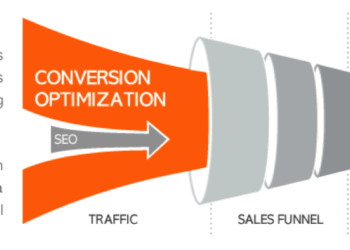In today’s fast-paced business environment, managing payroll and workforce operations efficiently has become a critical challenge for businesses of all sizes across the UK. The complexities of tax laws, evolving compliance requirements, fluctuating workforce needs, and the increasingly remote or hybrid work structures are just some of the obstacles that make managing payroll and workforce operations more difficult. As businesses strive to stay competitive, the integration of robust technology in payroll systems and workforce management has emerged as a key solution. However, many companies are still facing significant issues with payroll software UK and workforce management software UK.
This blog explores the current challenges businesses in the UK face when it comes to payroll processing and workforce management, and how the latest software solutions are emerging as game changers for businesses trying to adapt to these challenges.
The Growing Complexity of Payroll Management in the UK
Payroll management has always been a critical function for businesses, but as tax laws and employment regulations become more complex, companies are finding it increasingly difficult to maintain compliance, manage costs, and satisfy employee expectations.
1. Frequent Changes to Tax Laws and Employment Regulations
In the UK, employment regulations and tax laws are subject to frequent changes, making payroll management more complicated for businesses. Recent legislative changes like IR35 tax reform for contractors, National Insurance adjustments, and auto-enrollment pensions have created confusion for payroll teams trying to ensure compliance.
Keeping up with all the tax adjustments, deductions, benefits calculations, and allowances can be a daunting task. Outdated payroll systems or manual processes often fail to meet the speed of legal changes, leading to mistakes that can be costly both in terms of fines and damage to reputation.
Employers also need to ensure that they comply with complex reporting requirements from HMRC (Her Majesty’s Revenue and Customs). Tax returns, P60s, P45s, and RTI (Real-Time Information) submissions must be accurate and timely, which requires payroll software to be up-to-date and fully aligned with government regulations.
2. Errors in Payroll Calculation and Data Entry
The primary objective of any payroll process is to ensure employees are paid accurately and on time. However, human error remains one of the biggest challenges when it comes to payroll. Incorrect data entry, missed deductions, and overpayments can result in underpaid employees or even tax-related penalties. For example, a simple error in calculating overtime or adjusting salaries for absences could lead to significant discrepancies in pay.
Another major challenge for payroll teams is manually processing different pay scales for salaried employees, hourly workers, commission-based employees, and contractors. The discrepancies in payment structures can be overwhelming, and the risk of manual errors is high when these figures are manually input into payroll systems.
3. Managing Employee Benefits and Deductions
Many payroll systems struggle with integrating and managing employee benefits, especially if they are complex or diverse. In the UK, payroll must account for a variety of benefits, such as pensions, health insurance, company cars, and bonuses. Each benefit comes with specific tax implications, which must be accurately calculated and reflected in an employee’s pay.
Employees are also entitled to different leave types such as statutory sick pay (SSP), maternity leave, and parental leave, which need to be handled by payroll software. The challenge here is ensuring that the software correctly applies the relevant regulations for each individual employee.
The issue becomes even more complicated for companies that offer benefits such as profit-sharing, bonuses, or employee stock options. Without integrated software that can track both pay and deductions in one platform, businesses risk non-compliance or overcomplicated payroll processes.
4. The Rise of Remote Work and Hybrid Workforces
The COVID-19 pandemic accelerated the trend of remote and hybrid working. For payroll teams, managing employees who work from home or are spread out across various locations presents unique challenges.
Payroll systems must account for varying time zones, flexible working hours, remote employee allowances, and potential changes to how work hours are tracked. Many older payroll systems are not designed to handle remote work scenarios, leading to difficulties in tracking time accurately or ensuring that employees are paid for the correct number of hours worked.
Payroll software UK needs to be flexible and capable of integrating with other systems such as time tracking apps, especially for businesses that have adopted remote working arrangements.
The Time and Attendance Crisis in the UK
Time and attendance management is another area where many UK businesses are facing difficulties. Traditionally, companies used paper-based or clock-in systems to track employee hours, but this outdated approach is no longer feasible in the modern workforce. The need for more sophisticated systems has led to the adoption of workforce management software UK.
1. Tracking and Monitoring Employee Hours Accurately
Accurate time tracking is vital for calculating employee wages, especially for hourly workers or those who receive overtime pay. Unfortunately, many companies still rely on outdated methods such as timesheets or punch cards to track attendance. These methods are prone to errors, fraud, or manipulation, leading to incorrect payroll calculations.
Furthermore, businesses with large teams or shift-based schedules struggle to ensure that all employees adhere to their designated working hours. Without a centralized, automated time tracking system, these discrepancies can become widespread and difficult to resolve.
Workforce management software UK helps businesses monitor hours worked, clock-ins, clock-outs, breaks, and overtime, all in real-time, reducing the likelihood of errors and disputes over pay.
2. Absenteeism and Employee Sick Leave
Absenteeism is another significant challenge for UK businesses, and managing sick leave can be especially difficult. Statutory Sick Pay (SSP) entitlements are often difficult to track manually, especially for businesses with high turnover rates or employees with irregular attendance.
Employees who are frequently absent due to illness or personal reasons may not be easily identifiable unless absenteeism is tracked properly. If businesses fail to properly track sick leave or other types of leave, they risk violating statutory requirements.
Workforce management software UK can automate absence tracking, allowing businesses to easily identify attendance issues, whether they relate to unplanned absenteeism or authorized sick leave.
3. Shift Work and Scheduling Challenges
For businesses that operate with shift workers, managing and scheduling shifts is a complex task. Many businesses still rely on traditional manual scheduling systems, which can lead to errors, overstaffing, or understaffing during key periods. These scheduling issues can lead to inefficiencies, lost productivity, and even costly overtime.
With shift-based work, payroll systems also need to accurately calculate overtime, shift premiums, and holiday pay. These payroll components require careful attention and integration with time and attendance systems.
Workforce management software UK enables businesses to optimize scheduling, minimize conflicts, and track hours more efficiently. Automated scheduling also reduces the time spent on administrative tasks and allows managers to focus on ensuring that the right employees are scheduled at the right time.
4. Compliance with Working Hours Regulations
UK businesses must comply with the Working Time Regulations (WTR), which regulate the maximum number of hours employees can work, rest periods, and required breaks. Failing to adhere to these regulations can result in legal ramifications or fines.
Tracking compliance with WTR can be cumbersome, especially for businesses that operate in industries with fluctuating work hours or complex shift patterns. Without the correct tools in place, businesses risk breaching legal requirements, which can be costly and harmful to their reputation.
Workforce management software UK can automatically track employee hours against WTR limits, ensuring compliance is maintained at all times.
The Role of Payroll Software UK and Workforce Management Software UK in Solving These Problems
Modern payroll and workforce management software is designed to alleviate many of the challenges mentioned above. By automating time tracking, payroll calculations, and compliance checks, businesses can streamline operations, reduce human error, and ensure that employees are paid accurately and on time.
1. Integration of Payroll and Time & Attendance Systems
Many businesses face difficulties in ensuring that their payroll and time management systems work in tandem. Having separate systems for payroll processing and time and attendance tracking often leads to inefficiencies and errors when data is transferred manually.
Payroll software UK and workforce management software UK now offer seamless integration, allowing businesses to automate the entire payroll process from start to finish. By integrating attendance tracking with payroll calculations, businesses eliminate the risk of manual data entry errors and discrepancies.
2. Real-Time Access and Reporting
The ability to access time and payroll data in real-time is invaluable for managers and HR teams. Modern workforce management software provides up-to-date reporting on employee hours, attendance, absences, and overtime, allowing businesses to make more informed decisions about staffing and payroll.
For payroll teams, real-time data can help ensure that pay runs are processed on time and that any discrepancies are addressed before they become issues. Customizable reports can also help managers monitor trends in absenteeism or overtime costs, which can be used to identify areas for improvement.
3. Employee Self-Service and Transparency
Modern payroll and workforce management systems often include self-service portals for employees. These portals allow employees to access their own time records, payslips, and benefits information, improving transparency and reducing administrative workloads.
Employees can also request time off, check their sick leave balance, and update their personal details through these portals, reducing the burden on HR teams. The increased visibility also fosters a sense of trust and accountability among employees.
4. Improved Compliance and Legal Protection
One of the greatest benefits of modern payroll and workforce management systems is that they help businesses maintain compliance with labor laws and regulations. Payroll software UK and workforce management software UK are regularly updated to reflect changes in tax laws, employment regulations, and statutory benefits, ensuring that businesses are always up-to-date.
By automating the process of calculating pay, taxes, and benefits, businesses reduce the risk of costly compliance errors. Payroll and time tracking systems also help businesses track working hours, breaks, and leave, ensuring compliance with Working Time Regulations and other labor laws.
Conclusion
The challenges facing businesses in the UK regarding payroll and time and attendance management are numerous and complex. From frequent regulatory changes to managing remote work and employee benefits, businesses are under increasing pressure to maintain accuracy and compliance.
However, the advent of modern payroll software UK and workforce management software UK offers a solution to these challenges. These systems provide automation, integration, and real-time data, reducing the risks of errors and non-compliance while improving operational efficiency. By adopting the latest software tools, UK businesses can streamline their payroll and workforce management processes, ensure legal compliance, and improve overall employee satisfaction.
Ultimately, investing in advanced workforce management software is no longer just a luxury but a necessity for businesses looking to thrive in an increasingly complex regulatory and operational landscape.












